Mastering Bollinger Bands is essential for traders aiming to refine their technical analysis skills. These bands, composed of Middle, Upper, and Lower Bands, offer insights into market volatility and potential price movements. By customizing settings like lookback periods and standard deviations, traders can tailor Bollinger Bands to suit individual trading styles and market conditions. Utilizing example scanners and related indicators further enhances trading strategies, aiding in timely decision-making and risk management. Exploring Bollinger Bands across various timeframes and instruments provides a thorough understanding of market dynamics. Understanding these fundamentals is key to informed trading practices and effective risk management strategies.
Understanding Bollinger Bands
In the domain of technical analysis for traders, a vital tool that is widely utilized is the comprehension of Bollinger Bands. These bands consist of three lines: the Middle Band, which is a Simple Moving Average (SMA) representing the trend direction, and the Upper and Lower Bands, acting as dynamic support and resistance levels.
The width of the bands is essential as it is determined by market volatility. Traders use Bollinger Bands to develop trading strategies based on price movements within the bands. When the price touches the Upper Band, it may indicate overbought conditions, while touching the Lower Band may suggest oversold conditions.
Additionally, Bollinger Bands are effective in identifying trend reversals, as they widen during periods of high volatility and contract during calmer market conditions. By incorporating standard deviation in their calculations, Bollinger Bands offer traders a technical tool that can enhance their trading decisions and overall strategies.
Customizing Bollinger Bands Settings
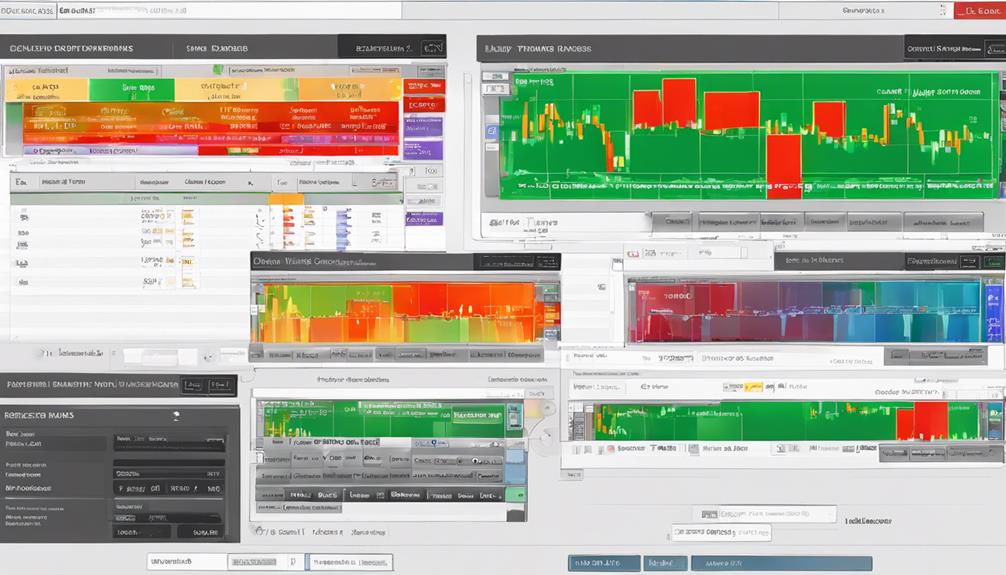
Customizing Bollinger Bands settings allows traders to tailor the technical tool to their specific trading preferences and strategies. By adjusting the lookback periods, traders can influence the sensitivity of the simple moving average (SMA) within the Bollinger Bands. Altering the standard deviations in the settings enables traders to widen or narrow the bands, impacting the bands' width and, as a result, the potential trading signals.
Experimenting with different moving average types such as the Exponential Moving Average (EMA) or Weighted Moving Average (WMA) can provide valuable insights into price movements. Alternative moving averages like EMA and WMA tend to react more quickly to price changes compared to the traditional SMA. This customization empowers traders to adapt Bollinger Bands to suit their individual trading styles, risk tolerance, and market conditions effectively.
Example Scanners Based on Bollinger Bands
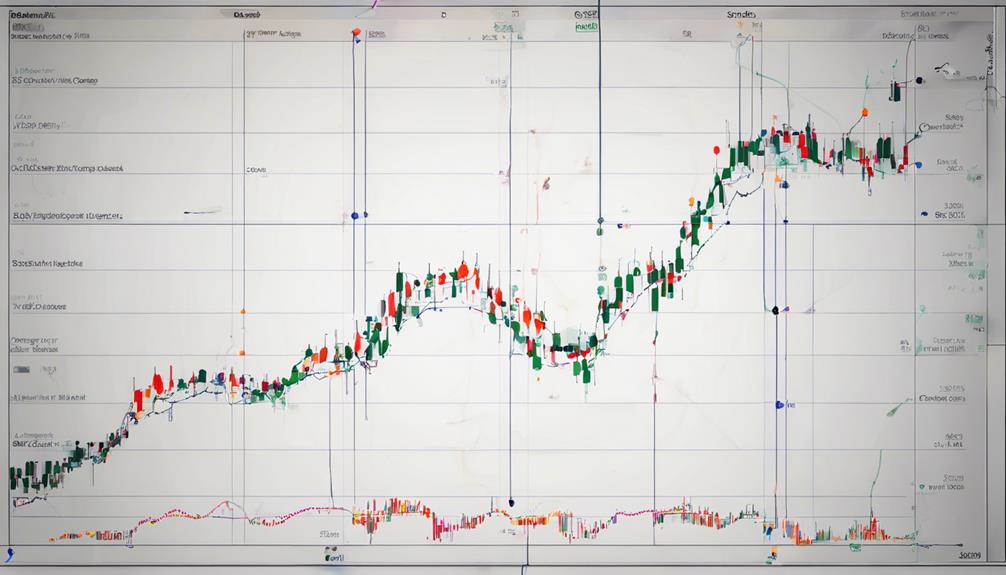
Example scanners based on Bollinger Bands play a vital role in helping traders identify stocks approaching upper or lower bands.
By setting custom parameters in these scanners, traders can efficiently filter stocks based on specific Bollinger Bands criteria.
Real-time alerts provided by these scanners notify traders when stocks breach upper or lower bands, enabling timely decision-making in line with Bollinger Bands strategies.
Scanner Settings for BB
Utilizing specific scanner settings tailored to Bollinger Bands can enhance a trader's ability to identify and capitalize on potential trading opportunities in the market. When setting up Bollinger Bands scanners, traders should consider the following:
- Detecting squeezes, breakouts, and trend reversals.
- Customizing timeframes and securities for accurate signals.
- Setting parameters for band width and moving average types.
- Including signal confirmations to validate trading decisions.
Real-Time Market Alerts
Real-time market alerts based on Bollinger Bands serve as invaluable tools for traders seeking to promptly identify and capitalize on potential trading opportunities in the dynamic market environment. These alerts, triggered by breaches of upper or lower bands, help pinpoint overbought or oversold conditions, enabling swift decision-making.
Traders can customize alerts to track specific securities or market conditions using Bollinger Bands, enhancing their ability to react promptly to changing market dynamics. By leveraging real-time alerts tied to Bollinger Bands, traders can stay ahead of price movements and seize profitable trading opportunities efficiently.
These tools provide a competitive edge by offering timely insights into market conditions, aiding traders in making informed decisions.
Practical Applications of Bollinger Bands
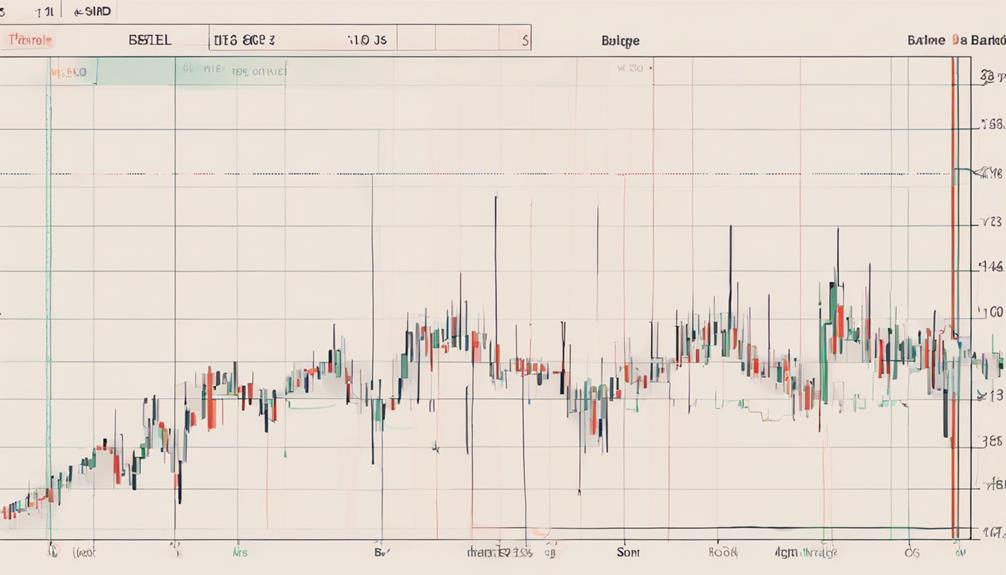
Bollinger Bands offer traders clarity in interpreting trading signals by visually representing potential entry and exit points.
Additionally, these bands serve as a valuable tool for measuring market volatility, helping traders assess the strength of price movements.
When applied effectively, Bollinger Bands can also aid in developing robust risk management strategies to protect trading capital.
Trading Signals Clarity
Enhancing trading signals clarity through the practical applications of Bollinger Bands involves a meticulous analysis of market conditions and price movements. Utilizing these tools effectively can provide valuable insights for traders. Here are four key points to ponder:
- Identifying Overbought and Oversold Conditions: Bollinger Bands help pinpoint potential reversal points in the market.
- Determining Trend Strength: Traders can assess the strength of a trend by observing the positions of the bands.
- Utilizing Price Movements: Movements outside the bands can indicate possible trading opportunities.
- Chart Setup: Properly configuring Bollinger Bands on charts is essential for accurate analysis.
Volatility Measurement Tool
In the domain of trading analysis, the practical applications of Bollinger Bands extend to serving as a valuable tool for measuring volatility in the market. Bollinger Bands consist of three bands: the Middle Band (SMA), Upper Band, and Lower Band. These bands adjust in width based on market volatility, providing insights into price movements. Traders utilize Bollinger Bands to identify overbought and oversold conditions, helping to pinpoint potential price reversals. Moreover, these bands aid in determining periods of high and low volatility, enabling traders to make well-informed decisions. The flexibility of Bollinger Bands makes them an essential instrument for managing risk effectively in trading scenarios.
| Bollinger Bands Features | Description |
|---|---|
| Middle Band (SMA) | Central line indicating the trend |
| Upper Band | Marks high volatility |
| Lower Band | Indicates low volatility |
| Overbought/Oversold | Signals potential reversals |
Risk Management Strategy
Utilizing Bollinger Bands as part of a thorough risk management strategy in trading enables traders to strategically protect their capital while optimizing decision-making processes.
When incorporating Bollinger Bands into risk management, traders should consider the following:
- Set strategic stop-loss orders below the lower band for long positions and above the upper band for short positions.
- Adjust stop-loss levels based on market conditions and volatility to manage risk effectively.
- Determine position sizing by aligning trades with individual risk tolerance and capital at risk per trade.
- Use Bollinger Bands to calculate appropriate position sizes based on entry and stop-loss levels.
Bollinger Bands Trading Strategies
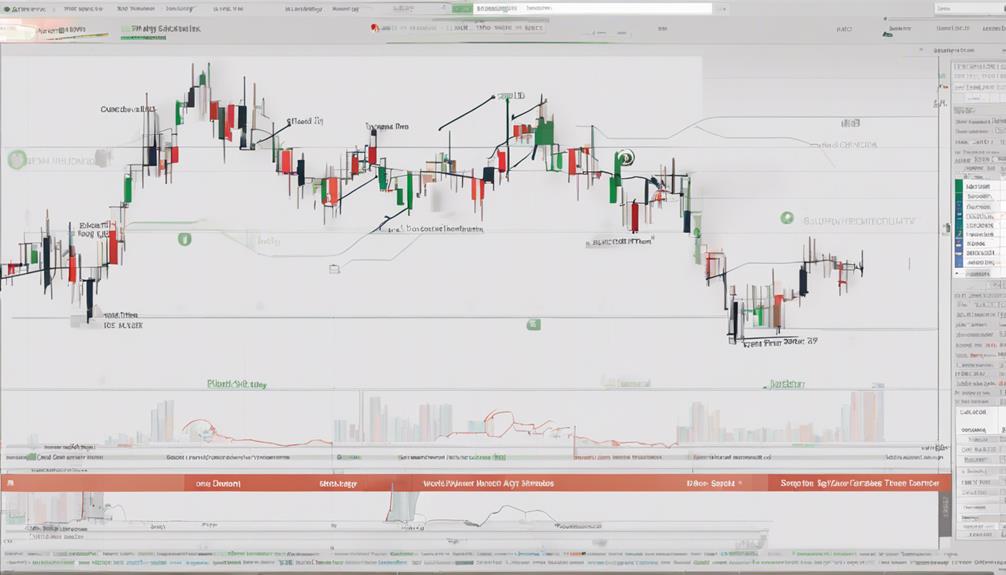
Bollinger Bands trading strategies encompass a range of techniques, including Bollinger Squeeze, Breakout, and Mean Reversion, that assist traders in identifying potential price movements and trend reversals based on band interactions. These strategies serve as a valuable technical analysis tool, helping traders determine overbought or oversold conditions in the market.
Additionally, the width of the bands reflects market volatility, providing insights into the strength of price movements. Traders often utilize a breakout strategy when the price breaches the bands, indicating a potential continuation of the current trend.
Furthermore, incorporating complementary indicators such as the Relative Strength Index (RSI) or Moving Average Convergence Divergence (MACD) alongside Bollinger Bands can enhance the accuracy of trading signals and overall strategy effectiveness. By combining these tools and strategies, traders can gain a more thorough understanding of price movement dynamics and make informed trading decisions.
Bollinger Bands Related Indicators
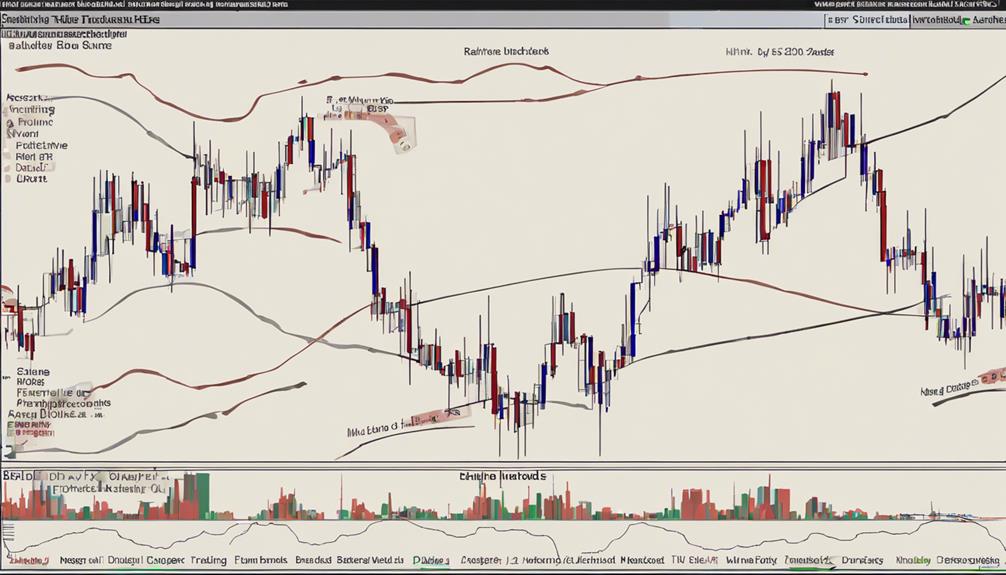
Integrating complementary indicators alongside Bollinger Bands can greatly enhance the precision of trading signals and augment the effectiveness of trading strategies. When combined with indicators like Relative Strength Index (RSI), Moving Average Convergence Divergence (MACD), and Stochastic Oscillator, Bollinger Bands can provide a more thorough view of market conditions.
Here are four key points to ponder when using Bollinger Bands related indicators:
- Enhanced Signals: Popular indicators such as RSI, MACD, and Stochastic Oscillator can help improve the success rate of trading strategies when used alongside Bollinger Bands.
- Confirmation: Traders often combine Bollinger Bands with other indicators to confirm signals and make more informed trading decisions, increasing the reliability of their trades.
- Market Trends: Adapting Bollinger Bands to different timeframes can offer additional insights into market trends, enabling traders to adjust their strategies accordingly.
- Multiple Perspectives: Utilizing multiple indicators with Bollinger Bands can provide a more holistic view of market conditions, assisting in confirming potential trade setups and enhancing overall trading performance.
Bollinger Bands Across Timeframes and Instruments
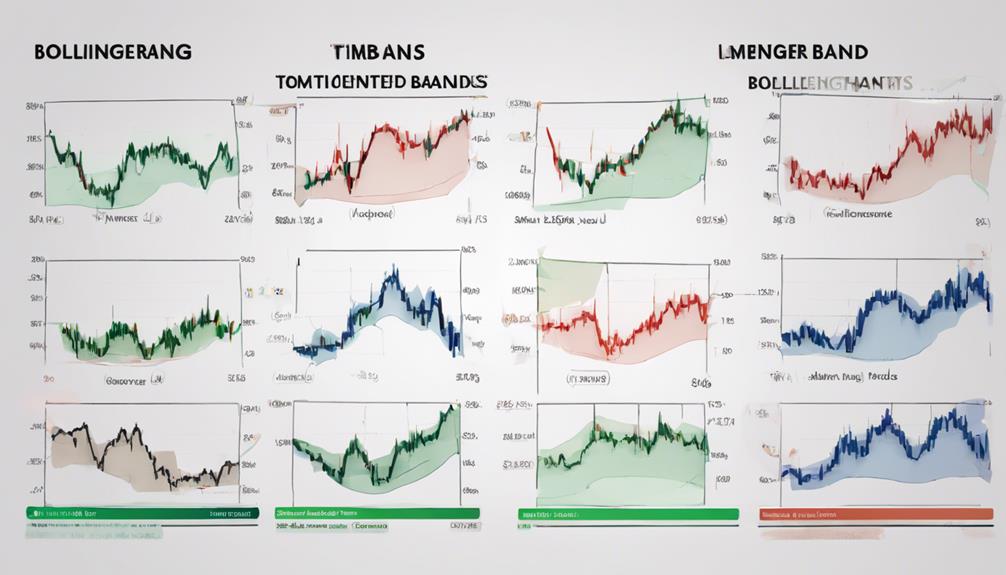
When examining Bollinger Bands across varying timeframes and financial instruments, traders gain valuable insights into market dynamics and unique trading opportunities. Adapting Bollinger Bands to different timeframes, from intraday to long-term charts, allows traders to understand the evolving market conditions. Similarly, applying Bollinger Bands to various financial instruments such as stocks, commodities, and forex aids in identifying distinct trading opportunities based on each instrument's characteristics. This analysis not only enhances one's trading strategy but also provides flexibility in adapting to different market scenarios. Below is a table showcasing the versatility of Bollinger Bands across timeframes and instruments:
| Aspects | Benefits |
|---|---|
| Multiple Timeframes | Insights into market dynamics |
| Diverse Instruments | Identifying unique opportunities |
| Trading Flexibility | Adapting to changing conditions |
| Enhanced Strategy | Improved decision-making |
| Market Conditions | Better risk management |
Is the Ultimate Guide to Bollinger Bands for Successful Trading Different from Mastering Bollinger Bands?
Yes, the Ultimate Guide to Bollinger Bands for Successful Trading is different from Mastering Bollinger Bands. While both resources focus on bollinger bands trading strategies, the ultimate guide offers comprehensive insights and practical tips for successful trading, whereas the mastery guide delves deeper into advanced techniques and applications.
Limitations and Considerations
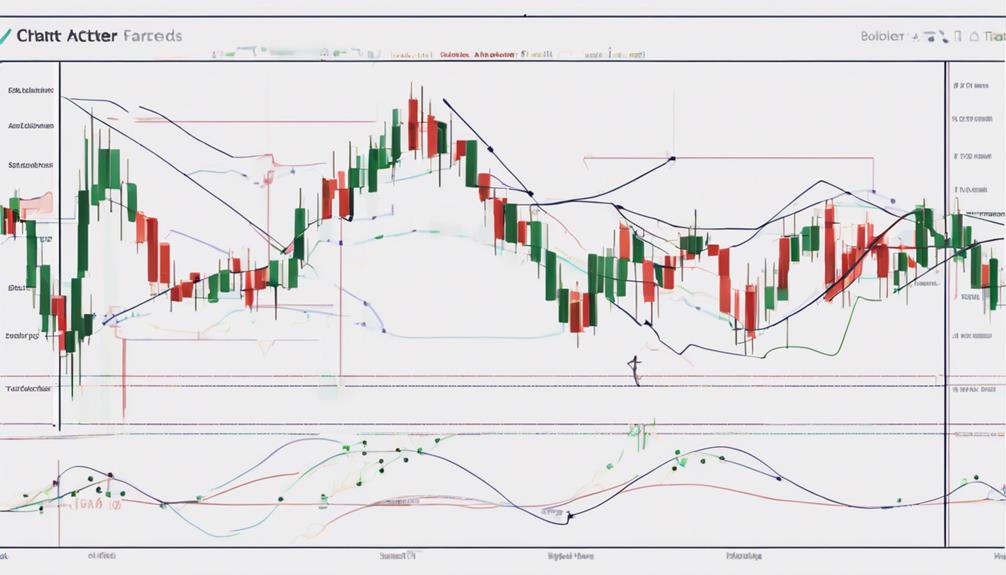
Understanding the limitations and considerations associated with utilizing technical indicators like Bollinger Bands is essential for traders seeking to make informed decisions in the financial markets. When using Bollinger Bands, it is vital to keep in mind the following:
- Prevent Overreliance: Acknowledge the limitations of Bollinger Bands to avoid relying solely on their signals for trading decisions.
- Seek Confirmation: Use other technical indicators in conjunction with Bollinger Bands to confirm signals and enhance the reliability of your analysis.
- Ranging Markets: Recognize that Bollinger Bands may not be as effective in ranging markets where clear trends are lacking.
- Integrated Strategy: Integrate Bollinger Bands into a trading strategy rather than using them in isolation to improve decision-making and risk management practices.
Can the Bollinger Band RSI Strategy be Used in Conjunction with the Ultimate Guide for Traders?
Yes, the bollinger band RSI strategy can be effectively used in conjunction with the ultimate guide for traders. By integrating the bollinger band RSI strategy into your trading approach, you can gain valuable insights into potential market trends and make more informed trading decisions.
Frequently Asked Questions
What Is the Best Strategy for Bollinger Bands Trading?
The best strategy for Bollinger Bands trading involves a holistic approach that integrates various elements:
- Trend identification
- Risk management
- Price action analysis
- Support-resistance levels
- Market psychology understanding
- Indicator combination
What Is the Success Rate of Bollinger Bands Strategy?
The success rate of the Bollinger Bands strategy can vary based on multiple factors, including:
- Backtesting results
- Risk management
- Real-time analysis
- Long-term profitability
- Market conditions
- Entry signals
- Exit strategies
- Position sizing
Understanding these aspects is vital for traders looking to gauge the effectiveness of the strategy.
How to Master Bollinger Bands?
To master Bollinger Bands, traders should explore advanced techniques, utilize practical examples, be aware of common mistakes, understand trading psychology, and implement effective risk management strategies. Additionally, they should experiment with indicator combinations, analyze backtesting results, and apply the concept in real-world trading scenarios.
Combining these elements will enhance proficiency in utilizing Bollinger Bands to identify market trends, overbought/oversold conditions, and potential entry/exit points for successful trading outcomes.
What Is the Best Setting for Bollinger Bands for Day Trading?
When considering the best setting for Bollinger Bands for day trading, a common practice involves using a 20-period moving average and 2 standard deviations. This configuration helps capture intraday volatility and potential price movements effectively.
Day traders often fine-tune their Bollinger Bands by adjusting the standard deviation to 1.5 or 2.5, enhancing their technical analysis strategies.
Combining Bollinger Bands with indicators like RSI or MACD can further optimize day trading approaches while emphasizing risk management and staying attuned to market trends, candlestick patterns, and price action.
Conclusion
In mastering Bollinger Bands, traders can enhance their analytical skills, customize settings, and develop effective trading strategies across various timeframes and instruments.
By understanding the practical applications and limitations of Bollinger Bands, traders can make informed decisions in the market.
Exploring related indicators and example scanners can further improve trading outcomes.
Ultimately, Bollinger Bands provide a versatile tool for traders seeking to optimize their trading performance.


